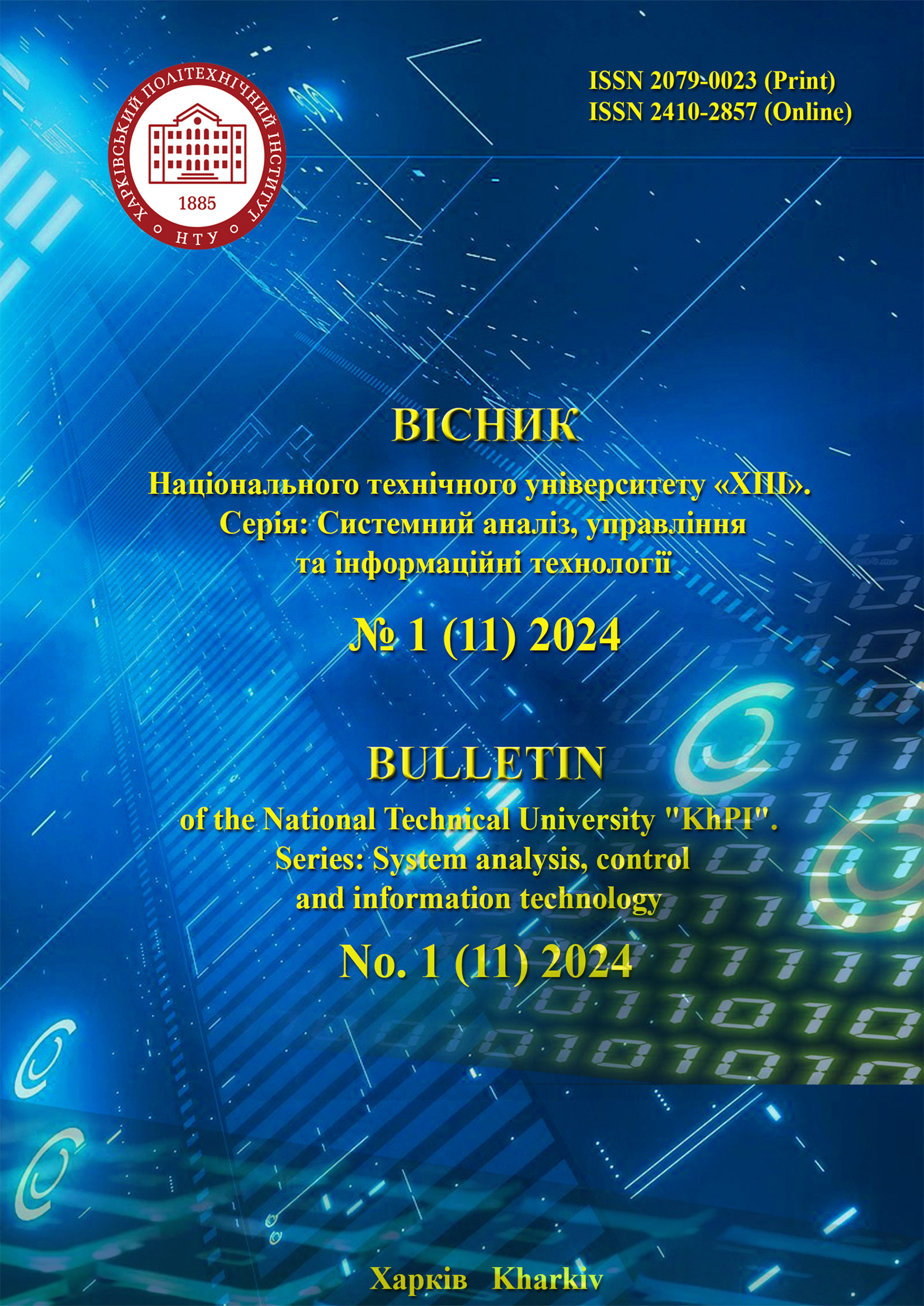USING THE GEOSPATIAL MULTI-CRITERIA DECISION ANALYSIS MODEL AND METHODS FOR SOIL DEGRADATION RISK MAPPING
DOI:
https://doi.org/10.20998/2079-0023.2024.01.03Keywords:
multi-criteria decision analysis, Analytic Hierarchy Process, Geographic Information System, spatial modeling, expert assessments, soil degradation riskAbstract
Modern methods of spatial analysis and modeling are increasingly being combined with decision-making methods and fuzzy set theory. The latter are actively integrated into the environment of Geographic Information Systems (GIS), such as well-known ones like ArcGIS or QGIS, in the form of separate tools, plugins, or Python scripts. Decision-making methods allow structuring the problem in geographical space, as well as taking into account the knowledge and judgments of experts and the preferences of the decision-maker in determining the priorities of alternative solutions. This paper provides a description of a geospatial multi-criteria decision analysis model, which allows addressing a wide range of ecological and socio-economic issues. An example of applying this model to map soil degradation risk in Ukraine is presented in the paper. According to the object-spatial approach, the properties of a territory are determined as the result of the action (impact) of a set of objects (processes) belonging to this territory. The territory is represented as a two-dimensional discrete grid, each point of which (local area) is an alternative. The set of local areas of the territory constitutes the set of alternatives. The representation of the territory model as a system of objects and relationships between them allows justifying the choice of a set of criteria (factors) for assessing soil degradation risk. Each criterion is a separate raster layer of the map. To build a hierarchical decision-making structure and calculate the importance coefficients of the criteria, the Analytic Hierarchy Process (AHP) method is used. To account for uncertainty in assessments and judgments of experts at the stages of standardization of alternative attributes by different criteria and aggregation of their assessments, expert membership functions for fuzzy sets and fuzzy quantifiers are applied. The particular feature of the proposed multi-criteria decision analysis model is its low computational complexity and ease of integration into the GIS environment.
References
Holubtsov O., Sorokina L., Splodytel A., Chumachenko S. Vplyv viiny rosii proty Ukrainy na stan ukrainskykh gruntiv. Rezultaty analizu. [The impact of russia’s war against Ukraine on the state of Ukrainian soils. Analysis results]. Kyiv: NGO "Center for Environmental Initiatives "Ekodia", 2023. 32 p. (In Ukr.).
Malczewski J., Rinner C. Multicriteria Decision Analysis in Geographic Information Science. Springer, New York. 2015, 331 p. DOI: 10.1007/978-3-540-74757-4.
Lidouh K. On themotivation behind MCDA and GIS integration. Multicriteria Decision Making. 2013. Vol. 3, № 2/3. P. 101–113. DOI: 10.1504/ IJMCDM.2013.053727.
Kuznichenko S., Kovalenko L., Buchynska I., Gunchenko Y., Development of a multi-criteria model for making decisions on the location of solid waste landfills. Eastern-European Journal of Enterprise Technologies, 2018. Vol.2, No. 3(92). P. 21–31. DOI: 10.15587/1729-4061.2018.129287
Kuznichenko S. D. Model of the process of geospatial multi-criteria decision analysis for territorial planning. Radio Electronics, Computer Science, Control, 2022. Vol. 2, P.140–153. DOI: https://doi.org/10.15588/1607-3274-2022-2-14.
Kuznichenko S., Buchynska I., Kovalenko L., Gunchenko, Y. Suitable site selection using two-stage GIS-based fuzzy multi-criteria decision analysis. Advances in Intelligent Systems and Computing, 2020. Vol. 1080 AISC, P.214–230. DOI: 10.1007/978-3-030-33695-0_16
Saaty T. The analytic hierarchy process: Planning, priority setting, resources allocation. New York, NY: McGraw, 1980. P. 287.
Zadeh L. A. Fuzzy sets. Information and Control, 1965. Vol. 8, No. 3, P. 338–353.
Kuznichenko S.D., Hunchenko Yu.O., Buchynska I.V. Nechitka model obrobky heoprostorovykh danykh v multykryterialnomu analizi prydatnosti terytorii [Fuzzy model of geospatial data processing in multi-criteria analysis of suitability of territories]. Zbirnyk naukovykh prats Viiskovoho instytutu Kyivskoho natsionalnoho universytetu imeni Tarasa Shevchenka [Collection of scientific works of the Military Institute of Taras Shevchenko Kyiv National University]. Kyiv, VIKNU, 2018. № 61. P.90-102.
Yager R. R. Quantifier guided aggregation using OWA operators. International Journal of Intelligent Systems, 1996. Vol.11(1), P. 49–73.
Kuznichenko S., Buchynska I. Vybir operatoriv ahrehuvannia dlia bahatokryterialnoi otsinky prydatnosti terytorii [Selection of aggregation operators for a multi-criteria evolution of suitability of territories]. Elektronne fakhove naukove vydannia «Kiberbezpeka: osvita, nauka, tekhnika» [Electronic professional scientific publication "Cybersecurity: education, science, technology"], 2019. Vol. 2, № 6. P. 46–56. DOI: 10.28925/2663-4023.2019.6.4656. (In Ukr.).
Stankevich S, Kharytonov N, Dudar T, Kozlova A. Risk Assessment of Land Degradation Using Satellite Imagery and Geospatial Modelling in Ukraine. Land Degradation and Desertification - a Global Crisis. InTech, 2016. Р.15–25. DOI: 10.5772/62403
Downloads
Published
How to Cite
Issue
Section
License

This work is licensed under a Creative Commons Attribution 4.0 International License.
Authors who publish with this journal agree to the following terms:
- Authors retain copyright and grant the journal right of first publication with the work simultaneously licensed under a Creative Commons Attribution License that allows others to share the work with an acknowledgement of the work's authorship and initial publication in this journal.
- Authors are able to enter into separate, additional contractual arrangements for the non-exclusive distribution of the journal's published version of the work (e.g., post it to an institutional repository or publish it in a book), with an acknowledgement of its initial publication in this journal.
- Authors are permitted and encouraged to post their work online (e.g., in institutional repositories or on their website) prior to and during the submission process, as it can lead to productive exchanges, as well as earlier and greater citation of published work (See The Effect of Open Access).


